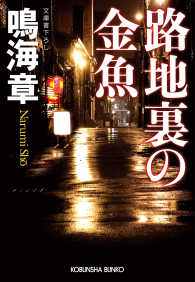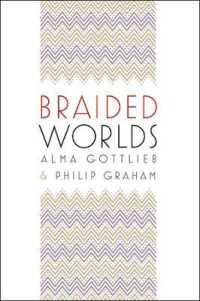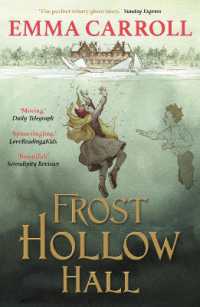基本説明
The first book primarily focused on contemporary Chicana visual arts.
Full Description
In Alma Lopez's digital print Lupe & Sirena in Love (1999), two icons-the Virgin of Guadalupe and the mermaid Sirena, who often appears on Mexican lottery cards-embrace one another, symbolically claiming a place for same-sex desire within Mexican and Chicano/a religious and popular cultures. Ester Hernandez's 1976 etching Libertad/Liberty depicts a female artist chiseling away at the Statue of Liberty, freeing from within it a regal Mayan woman and, in the process, creating a culturally composite Lady Liberty descended from indigenous and mixed bloodlines. In her painting Coyolxauhqui Last Seen in East Oakland (1993), Irene Perez reimagines as whole the body of the Aztec warrior goddess dismembered in myth. These pieces are part of the dynamic body of work presented in this pioneering, lavishly illustrated study, the first book primarily focused on Chicana visual arts.Creating an invaluable archive, Laura E. PÉrez examines the work of more than forty Chicana artists across a variety of media including painting, printmaking, sculpture, performance, photography, film and video, comics, sound recording, interactive CD-ROM, altars and other installation forms, and fiction, poetry, and plays. While key works from the 1960s and 1970s are discussed, most of the pieces considered were produced between 1985 and 2001. Providing a rich interpretive framework, PÉrez describes how Chicana artists invoke a culturally hybrid spirituality to challenge racism, bigotry, patriarchy, and homophobia. They make use of, and often radically rework, pre-Columbian Mesoamerican and other non-Western notions of art and art-making, and they struggle to create liberating versions of familiar iconography such as the Virgin of Guadalupe and the Sacred Heart. Filled with representations of spirituality and allusions to non-Western visual and cultural traditions, the work of these Chicana artists is a vital contribution to a more inclusive canon of American arts.
Contents
List of Illustrations ixx
Acknowledgments xiii
Note to the Reader xviii
Introduction: Invocation, Ofrenda 1
1. Spirit, Glyphs 17
2. Body, Dress 50
3. Altar, Alter 91
4. Tierra, Land 146
5. Book, Art 205
6. Face, Heart 257
Conclusion: Self, Other 297
Notes 309
Works Cited 347
Index 381
-

- 電子書籍
- 路地裏の金魚 光文社文庫
-

- 電子書籍
- 電波オデッセイ vol.1






